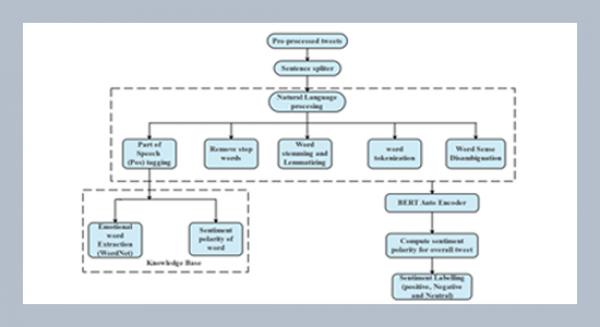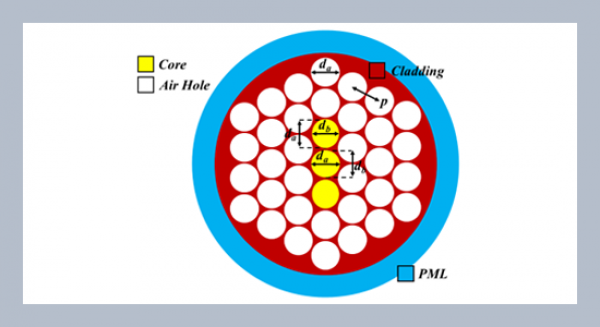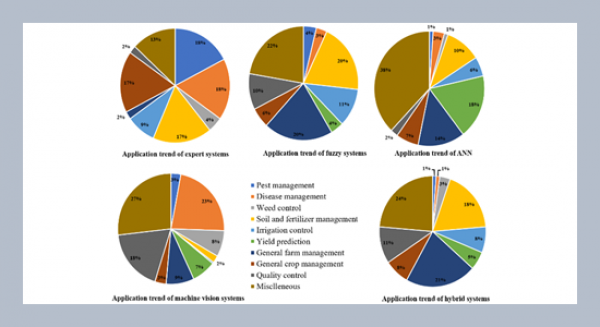REFERENCES
- Abbasi, A., Chen, H., Salem, A. 2007. Sentiment analysis in multiple languages: feature selection for opinion classification in web forums. ACM Transactions on Information Systems, 26.
- Aizawa, A. 2003. An information-theoretic perspective of TF-IDF measures. Information Processing and Management, 39, 45–65.
- Akhtar, S., Garg, T., Asif Ekbal, A. 2020. Multi-task learning for aspect term extraction and aspect sentiment classification. Neurocomputing, in press.
- Bai, X. 2010. Predicting consumer sentiments from online text. Decision Support Systems, doi:10.1016/j.dss. 2010.08.024.
- Bansal, B., Srivastava, S. 2018. Sentiment classification of online consumer reviews using word vector representations. Procedia Computer Science, 132, 1147–1153.
- Cerqueira, A.S., Ferreira, D.D., Ribeiro, M.V., Duque, C.A. 2008. Power quality events recognition using a SVM-based method. Electric Power Systems Research, 78, 1546–1552.
- Chang, C.C., Lin, C.J. 2001. LIBSVM: a Library for support vector machines, Software, http://www.csie.ntu.edu.tw/~cjlin/libsvm.
- Chaovalit, P., Zhou, L. 2005. Movie review mining: A comparison between supervised and unsupervised classification approaches. Proceedings of the 38th Hawaii International Conference on System Sciences.
- Chatterjee, S., Kar, A.K. 2020. Why do small and medium enterprises use social media marketing and what is the impact: Empirical insights from India. International Journal of Information Management, 53, Article 102103.
- Chen, J., Huang, H., Tian, S., Qua, Y. 2009. Feature selection for text classification with Naïve Bayes. Expert Systems with Applications, 36, 5432–5435.
- Chen, L.-S., Chiu, H.-J. 2009. Developing a neural network based index for sentiment classification. Proceedings of the International MultiConference of Engineers and Computer Scientists, 744–749.
- Gokalp, O., Tasci, E., Ugur, A. 2020. A novel wrapper feature selection algorithm based on iterated greedy metaheuristic for sentiment classification. Expert Systems with Applications, 14615, Article 113176.
- Hsu, C.-W., Chang, C.-C., Lin, C.-J. 2006. A practical guide to support vector classification. http://www.csie.ntu.edu.tw/~cjlin/ libsvm/index.html.
- Karabatak, M., Ince, M.C. 2009. A new feature selection method based on association rules for diagnosis of Erythemato-squamous diseases. Expert Systems with Applications, 36, 12500–12505.
- Kennedy, A., Inkpen D. 2006. Sentiment classification of movie reviews using contextual valence shifters. Computational Intelligence, 22, 110–125.
- Khan, K., Baharudin, B.B., Khan, A., e-Malik, F. 2009. Mining opinion from text documents: A survey, The 3rd IEEE International Conference on Digital Ecosystems and Technologies, 217–222.
- Kong, L., Li, C., Ge, J., Zhang, F., Feng, Y., Li, Z., Luo, B. 2020. Leveraging multiple features for document sentiment classification. Information Sciences, 518, 39–55.
- Li, B., Xu, S., Zhang, J. 2007. Enhancing clustering blog documents by utilizing author/reader comments. Proceedings of the 45th Annual Southeast Regional Conference, 94–99.
- Li, S., Zong, C., Wang, X. 2007. Sentiment classification through combining classifiers with multiple feature Sets. Proceedings of the International Conference on Natural Language Processing and Knowledge Engineering, 135–140.
- Liu, B., Hu, M., Cheng, J. 2005. Opinion observer: analyzing and comparing opinions on the web. Proceedings of the 14th international conference on World Wide Web, 342–351.
- Martineau, J., Finin, T. 2009. Delta TFIDF: An improved feature space for sentiment analysis. Proceedings of the Third AAAI International Conference on Weblogs and Social Media, San Jose, CA, USA.
- Mekawie, N., Hany, A. 2019. Understanding the factors driving consumers’ purchase intention of over the counter medications using social media advertising in Egypt: (A Facebook advertising application for cold and Flu products). Procedia Computer Science, 164, 698–705.
- Na, J.C., Khoo, C., Wu, P.H.J. 2005. Use of negation phrases in automatic sentiment classification of product reviews. Library Collections, Acquisitions, and Technical Services, 29, 180–191.
- O’Keefe, T., Koprinska, I. 2009. Feature selection and weighting methods in sentiment analysis. Proceedings of the 14th Austraasian Document Computing Symposium.
- Pang, B., Lee, L., Vaithyanathan, S. 2002. Thumbs up? Sentiment classification using machine learning techniques. EMNLP, 79–86.
- Polat, K., Gunes, S. 2009. A new feature selection method on classification of medical datasets: Kernel F-score feature selection. Expert Systems with Applications, 36, 10367–10373.
- Simeon, M., Hilderman, R. 2008. Categorical proportional difference: A feature selection method for text categorization. The Australasian Data Mining Conference, 201–208.
- Tan, S., Zhang, J. 2008. An empirical study of sentiment analysis for Chinese documents. Expert Systems with Applications, 34, 2622–2629.
- Tang, B., Shepherd, M., Milios, E., Heywood, M.I. 2005. Comparing and combining dimension reduction techniques for efficient text clustering. Proceedings of the Workshop on Feature Selection for Data Mining, SIAM Data Mining.
- Tian, X., Tong, W. 2010. An improvement to TF: term distribution based term weight algorithm. The second International Conference on Networks Security Wireless Communications and Trusted Computing, 252–255.
- Vapnik, V.N. 1995. The nature of statistical learning theory, Springer-Verlag.
- Wang, T., Huang, H., Tian, S., Xu, J. 2010. Feature selection for SVM via optimization of kernel polarization with Gaussian ARD kernels. Expert Systems with Applications, 37, 6663–6668.
- Whitelaw C., Garg N., Argamon, S. 2005. Using appraisal groups for sentiment analysis. Proceedings of the 14th ACM international conference on Information and knowledge management, 625–631.
- Xu, F., Pan, Z., Xia, R. 2020. E-commerce product review sentiment classification based on a naïve Bayes continuous learning framework. Information Processing & Management, Article 102221.
- Ye, Q., Zhang, Z., Law, R. 2009. Sentiment classification of online reviews to travel destinations by supervised machine learning approaches. Expert Systems with Applications, 36, 6527–6535.
- Yu, B., Kaufmann, S., Diermeier, D. 2008. Exploring the characteristics of opinion expressions for political opinion classification. Proceedings of the 9th Annual International Digital Government Research Conference, 82–91.
- Zhang, C., Zuo, W., Peng, T., He, F. 2008. Sentiment classification for Chinese reviews using machine learning methods based on string kernel. The Third International Conference on Convergence and Hybrid Information Technology, 909–914.
- Zhang, W., Yoshida, T., Tang, X. 2011. A comparative study of TF-IDF, LSI and multi-words for text classification. Expert Systems with Applications, 38, 2758–2765.
- Zhang, Y., Zhang, Z., Miao, D., Wang, J. 2019. Three-way enhanced convolutional neural networks for sentence-level sentiment classification. Information Sciences, 477, 55–64.
- Zhao, P., Hou, L., Wu, O. 2020. Modeling sentiment dependencies with graph convolutional networks for aspect-level sentiment classification. Knowledge-Based Systems, 1936, Article 105443.















